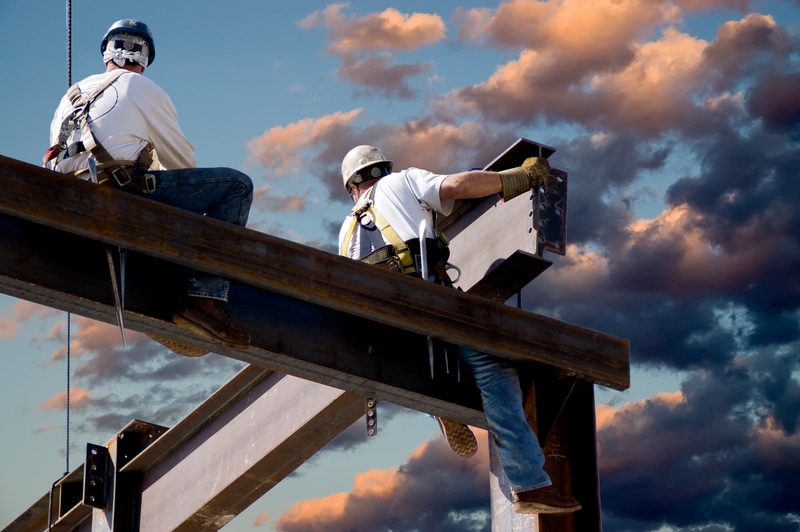The world of construction owes much to the bravery and skill of structural iron and steel workers who construct the frameworks of buildings, bridges, and other massive structures.
These people play a vital role in shaping the modern landscape, but their jobs come with inherent dangers and risks.
From working at great heights to handling heavy materials, structural iron and steel workers face a unique set of hazards that demand expertise, constant vigilance, and stringent safety measures.
In this article, we delve into the dangers associated with their work and shed light on the challenges they bravely overcome to create our towering structures.
Working at Heights
One of the most prominent risks faced by structural iron and steel workers is working at great heights.
Erecting steel structures often involves ascending cranes, scaffolding, or beams several stories above the ground.
The potential for falls is ever-present, and even a momentary lapse in concentration or a misstep can have devastating consequences.
Strict adherence to fall protection systems, including guardrails, safety harnesses, and properly secured platforms, is essential to prevent accidents and safeguard lives.
READ MORE: Ford readies new wave of layoffs for US workers
Rigging and Heavy Lifting
Structural iron and steel workers regularly handle heavy loads, including steel beams, girders, and construction equipment.
Rigging and lifting operations pose inherent risks, such as strains, crush injuries, or equipment failures.
Workers must be proficient in rigging techniques, operate lifting machinery correctly, and communicate effectively with crane operators to prevent accidents.
Proper training, regular equipment inspections, and adherence to weight limits and safety protocols are paramount in maintaining a safe working environment.
Structural Collapse
The nature of structural iron and steelwork involves erecting and connecting various components, forming a complex framework. The risk of structural collapse is a constant concern, particularly during the construction phase.
Errors in design, miscalculations, or unforeseen circumstances can compromise the stability of the structure, endangering the lives of workers.
Stringent adherence to engineering specifications, meticulous inspections, and effective communication among team members is crucial to preventing catastrophic accidents.
READ MORE: 3M settles $10.3 billion water pollution lawsuit
Welding and Hot Work
Welding plays a vital role in connecting steel components, but it also introduces additional hazards to the job.
The use of open flames, sparks, and intense heat during welding operations poses risks of burns, eye injuries, or respiratory hazards due to fumes and gases.
Adequate training, utilization of personal protective equipment (PPE), and strict adherence to established safety procedures are essential to minimize the dangers associated with welding and hot work.
Weather Conditions
Structural iron and steel work often take place outdoors, exposing workers to various weather conditions.
Extreme heat, cold, rain, or high winds can significantly impact safety and increase the risk of accidents.
Slippery surfaces, reduced visibility, or instability due to inclement weather pose serious threats to the well-being of workers.
Regular monitoring of weather conditions, proper clothing and protective gear, and temporary suspension of work during severe weather are essential precautions.
Electrocution and Power Line Hazards
The proximity of structural iron and steel work to power lines and electrical equipment introduces the risk of electrocution. Accidental contact with live wires or improper use of tools near energized sources can lead to severe injuries or fatalities.
Proper training in electrical safety, the establishment of clear work boundaries near power lines, and the use of insulated tools and equipment are critical to avoid electrical accidents.
Need Career Advice? Get employment skills advice at all levels of your career
Structural iron and steel workers demonstrate unwavering courage and skill as they shape the skylines of our cities. However, their jobs come with significant dangers that require constant vigilance and adherence to stringent safety measures.
Employers in the construction industry must prioritize worker safety by providing comprehensive training, implementing strict safety protocols, and fostering a culture of safety awareness.
By doing so, we can honour the dedication of these individuals and ensure their well-being as they continue to construct the remarkable structures that define our modern world.




